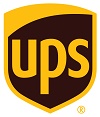Walgreens operates more than 8,000 drugstores. In 2017, the company began an in-depth analysis of workers' compensation claims occurring within its retail locations and found about 40% of injuries were caused by slips, trips and falls occurring in its retail stockroom environments. The analysis identified an opportunity to collaborate cross-functionally, redefining its stockroom inventory controls and storage layouts.
Walgreens launched the Safety Focused Stockroom program concentrating on safe storage planograms and the safe storage of merchandise without the use of a ladder. Year to date, Walgreens has successfully transformed more than 76% of its retail locations to ladder-less stockrooms. Workers’ compensation claims associated with slips, trips and falls within the stockroom have been reduced by 66% over the last six years. Walgreens continues to focus on improving its adoption of the program, showing its commitment to managing risks and increasing safety awareness for its team members.
Anne Arundel County Government Risk Management
Anne Arundel County Government proudly serves the residents, businesses and visitors of Anne Arundel County, Maryland, through various county departments and divisions. In 2022, a wave of targeted and aggressive confrontations directed toward county employees that were often filmed – a phenomenon going on throughout the U.S. – created a feeling of unease in the workplace. While the pandemic afforded many opportunities to work remotely, the absence of face-to-face interaction impacted many employees’ confidence in social interactions.
To address this problem, the Risk Management Division created a “Situational Awareness in the Workplace” training program. The program not only provided factual information and lawful responses but also developed a process and conversational roadmap that could be used by any employee to speak with any aggressive person to abate conflict. Anne Arundel County Government believes its safety culture and engagement are improved when training acknowledges employee mental health and wellbeing.
Day & Zimmermann
In early 2022, Day & Zimmermann’s Maintenance and Construction division (DZMC) was challenged to reestablish a traditional operating model while navigating post-COVID-19 recovery. Both DZMC and its customers faced unprecedented staffing shortages, supply chain delays and an inconsistent return to “normal” operations.
In tackling the problem, DZMC reinvigorated Torque, an innovative safety program leveraging psychology to help field teams recognize hazards, improve situational awareness and adjust how they think about work. It also implemented a Safety Improvement Strategy Roundtable, universal employee safety orientation and an internal Supervisor’s Education and Training Program. Most impactfully, it shifted its internal safety conversations from being numbers-oriented to people-oriented. Its 2022 performance resulted in one of its top three safety performances in the past 11 years. DZMC also received numerous internal, industry and state-level safety awards at many of its work sites because of its unique and rigorous organizational approach to EHS management.

